Records confirm a blacksmith’s workshop on Fore Street in 1841 but it is highly likely that it was much older than this, sandwiched on both sides by 18th Century (or earlier) cottages. This extract looks at the families that have occupied this spot and what we can still see of the original site.
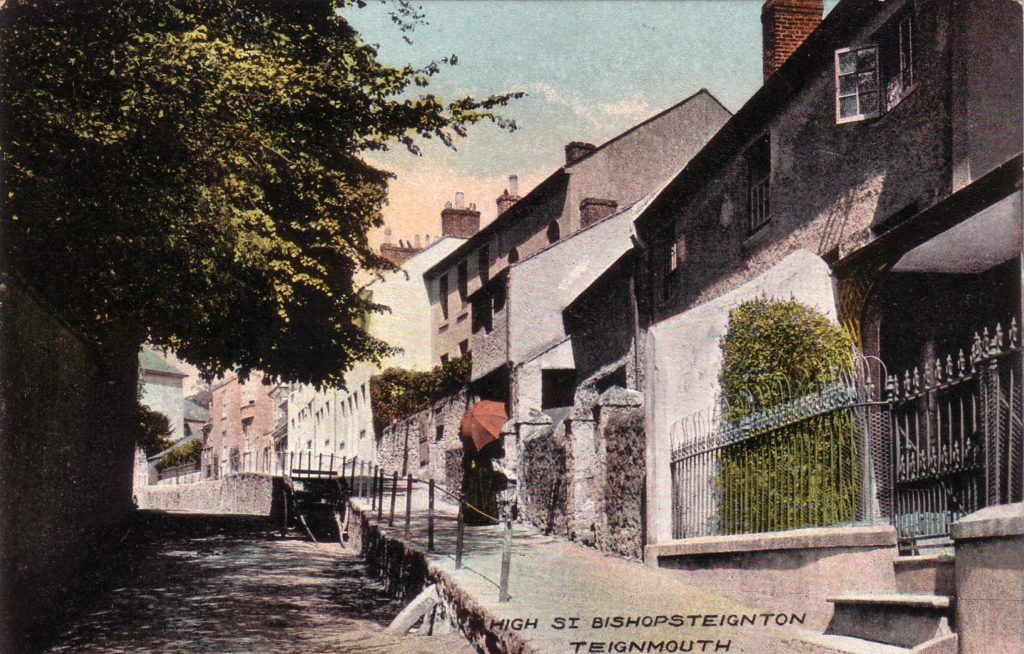
Empty carriage outside blacksmith’s awaiting horse to return. Horses were led up the raised pavement to the Blacksmith’s shop.
Census 1841
Occupants of Forge, Fore Street, Bishopsteignton
As well as the workshop and the loft, the families have occupied the adjoining properties as their families grew.
- John Major 55 Smith
- Charity Major (Kingwell) 60 Wife
- Mary Major 20
- Henry Major 14
1848
Mortgage by lease for 2,000 years
1. Richard Scagell of Bishopsteignton, blacksmith
2. George Parnell of Bishopsteignton, yeoman
Premises: one messuage, tenement and linhay formerly described as a cottage and herbgarden, adjoining a dwellinghouse also in the possession of 2.
Consideration: £100
George Parnell was the farmer at Higher Radway Farm
Bishopsteignton, White’s Directory 1850
Blacksmiths
- John Major (Age 64) Fore Street
- Henry Major (Age 23) Fore Street
- Richard Scagall (Age 29) Fore Street
- Simon Vincent & wheelwright (Age 63) Radway Street/Ash Hill
Census 1851
Occupants of Forge, Fore Street, Bishopsteignton
- Henry Major 28 – Smith and Farrier
- Joanna Major 26 Wife
- Henry Major 2 Son
- John Major 4 months Son
Census 1861
Occupants of Forge, Fore Street, Bishopsteignton
- Henry Major 39 – Smith
- Joanna Major 37 Wife
- Henry Major 12 Son
- Joseph Major 8 Son
- Mary Major 6 Daughter
- Lewis Major 4 Son
- Unnamed Infant 3 weeks Son
- Henry Dayment 25 unmarried Servant/Smith
Census 1871
Occupants of Forge, Fore Street, Bishopsteignton
- Henry Major 48 – Blacksmith
- Joanna Major 45 Wife
- Henry William Major 22 Son – Blacksmith (Moved to Highweek)
- Joseph Major 18 Son – Blacksmith
- Mary Major 16 Daughter
- Lewis Major 14 Son – Carpentry Apprentice
- John Major 10 Son – Scholar
- George Major 7 Son – Scholar
Census 1881
Occupants of Forge, 3 Fore Street, Bishopsteignton
- Henry Major 59 – Blacksmith
- Joanna Major 56 Wife
- Mary Major 25 Daughter
- John Major 20 Son – Blacksmith
- George Major 17 Son – Blacksmith
- Amelia Major 4 – Granddaughter
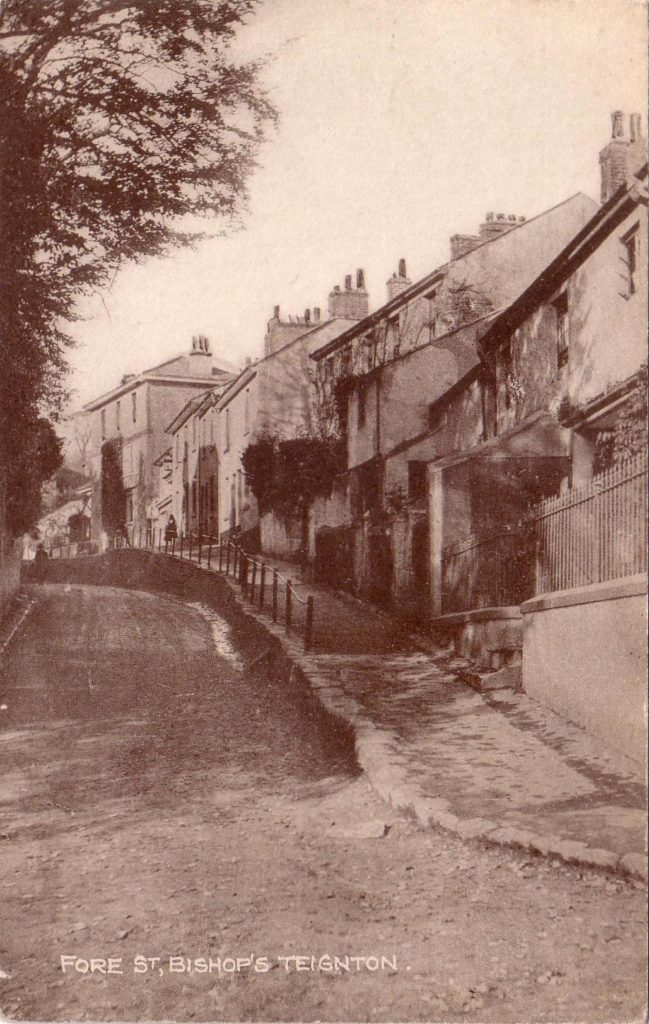
Fore Street – Myrtle Cottage, and blacksmiths
Census 1891
Occupants of Forge, 3 Fore Street, Bishopsteignton
- Joanna Major 67 Widow
- Lewis Major 22 Son , Carpenter
Occupants of 4 Fore Street
- John Major 30 Blacksmith and Farrier
- Louisa Major 27 Wife
- Alice Major 6 Daughter
- Lily Major 4 Daughter
- Walter Major 3 Son
- James Burly 26 Boarder, Smith’s Assistant
1893 Kelly’s Directory – Bishopsteignton
Blacksmiths
- John Major
- Richard Scagell
Census 1901
Occupants of Fore Street, Bishopsteignton
- Joanna Major 75 in two roomed cottage
3 Fore Street
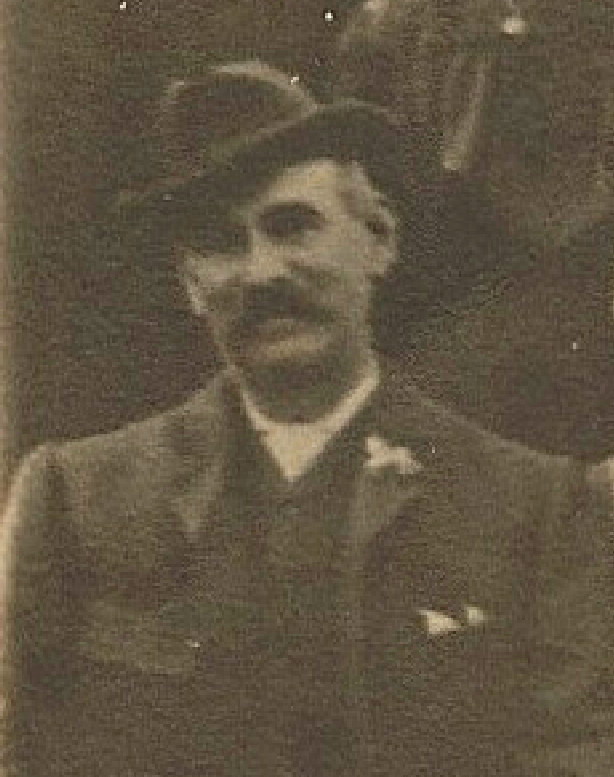
John William Major Born 1861 – Blacksmith
- John W Major 40 – Blacksmith and Farrier
- Louisa Major 37 Wife
- Alice M Major 16 Daughter
- Walter J Major 13 Son – Blacksmith’s Apprentice
- Gordon F Major 9 Son
Census 1911
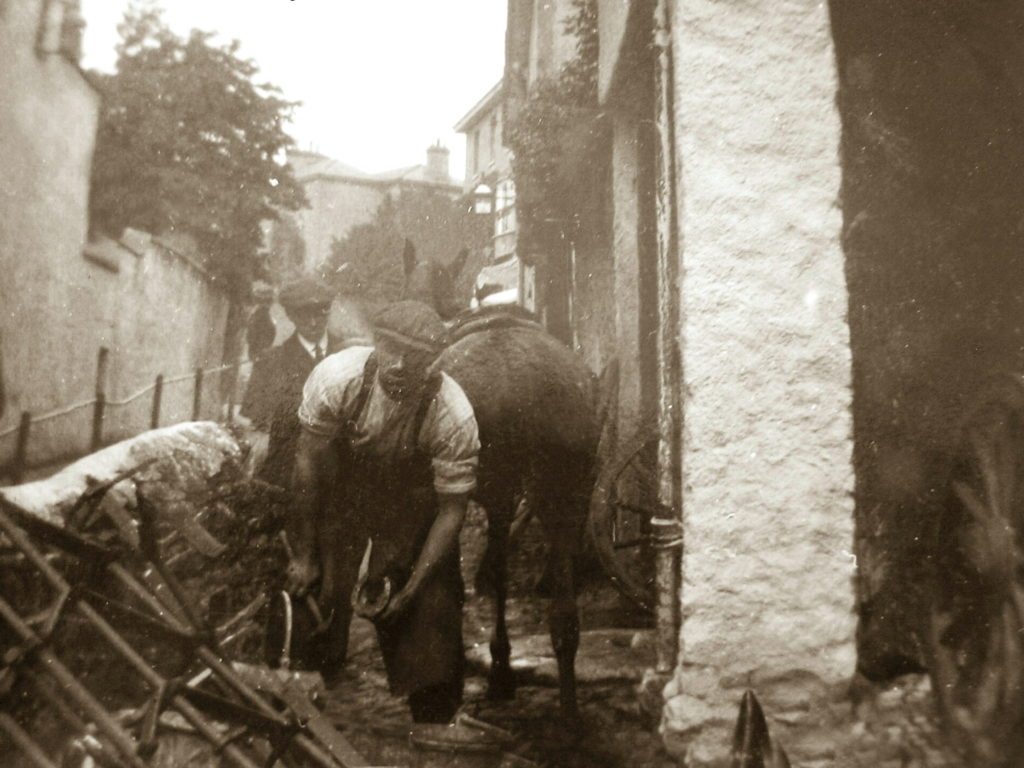
Gordon Major Fore Street Smithy
Occupants of Fore Street, Bishopsteignton
- John William Major 50 – Farrier and Smith
- Louisa Major 47 Wife
- Gordon Fred Major 19 Son – Working with Father
- Frances Loveday Major 6 Daughter
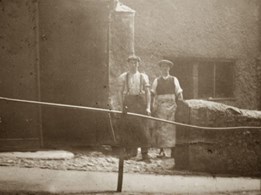
Gordon Major – Blacksmith
1914 Kelly’s Directory – Bishopsteignton
Blacksmiths
- Radway – James Burley
- Fore Street – John William Major
1923 Kelly’s Directory – Bishopsteignton
Blacksmiths
- Radway – James Burley (see 1891 Census)
- Fore Street – John William Major
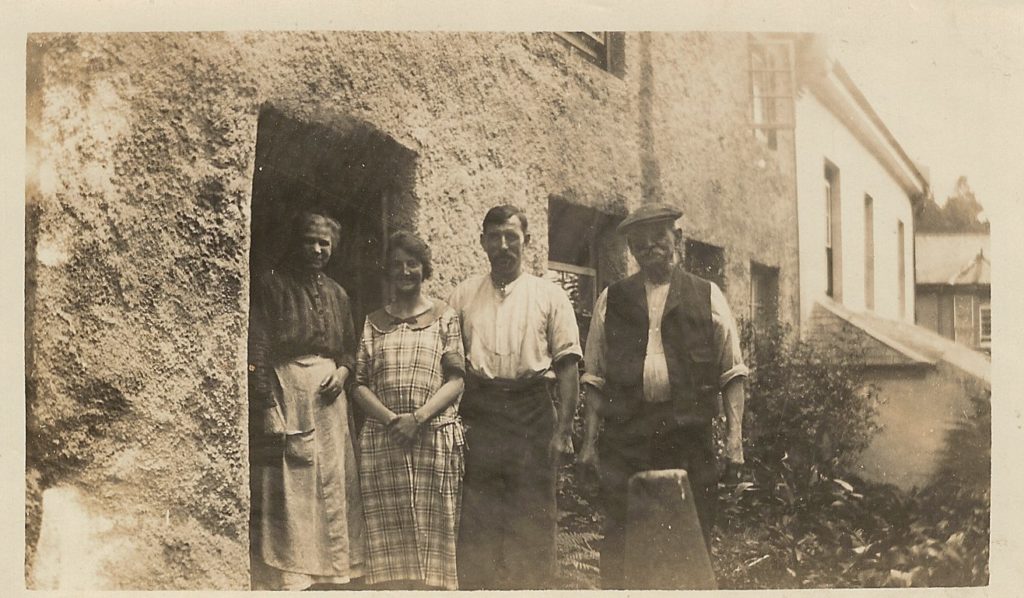
Louisa Major(61), Flo (24) and Gordon Major (32), John Major (63) in 1924 outside Forge Cottage.
1939 Census
The Forge, Fore Street, Bishopsteignton
- Thomas Sealey 49 Master Blacksmith
- Mary Sealey 49 Wife
- John Sealey 10 Son
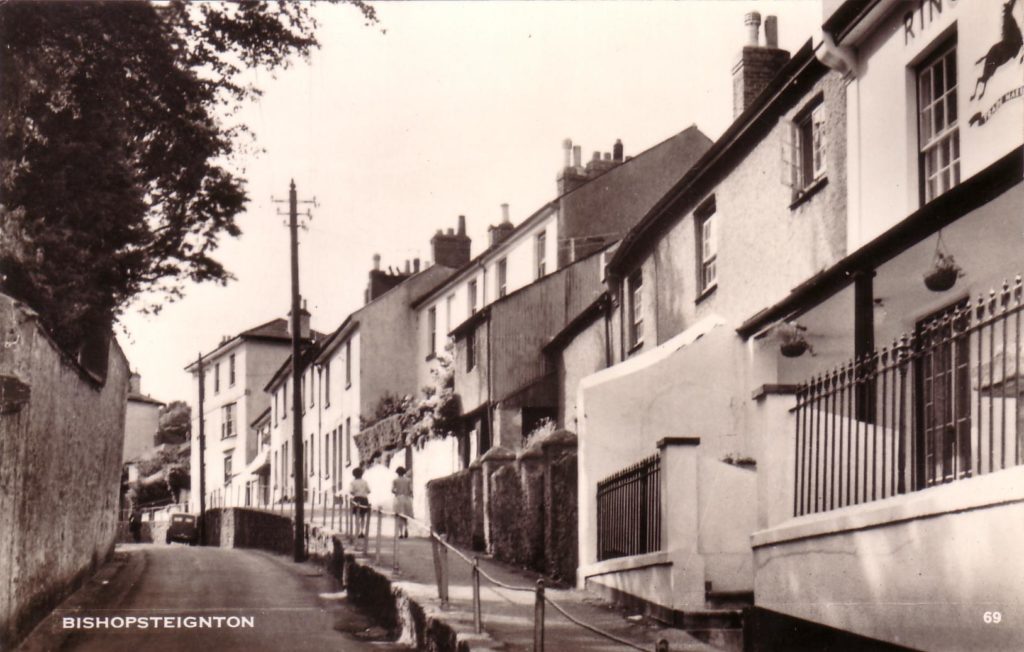
Fore Street showing the loft of the blacksmith
20th Century
The owner of the forge gave the local authority the plot of land that the public toilets now stand. Cloche Merle House was then named after the book in which everyone wanted a public toilet but nobody wanted it situated next to them. Previous to this name it was called Forge Cottage and is reportedly a plague cottage.
In pictures of the old forge a mill stone can be seen embedded in the ground. There is also a mill stone outside the toilets. Is it the same one or a fitting tribute to the previous use of the land?
To the left of the toilet block you can still see the original gable roof line and wall of the forge building.
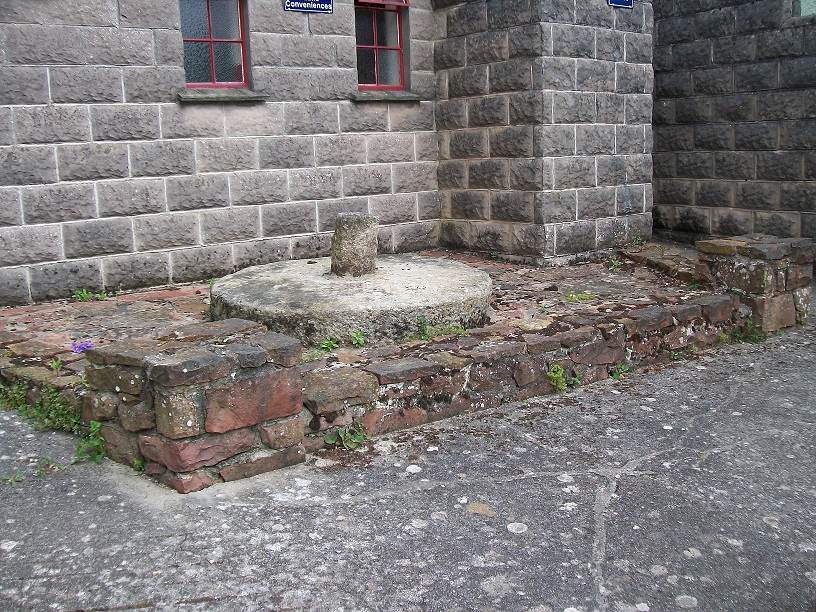
Mill stone on site of the Fore Street Forge, Bishopsteignton.
